1. The Comic Vision.
This opening class is an overview of the eleven others to follow, as we consider what kinds of Comedy occur in the
context of musical theater, what kinds of effect it may have on an audience, and what means composers and lyricists
might use to obtain them. The first hour, Days of Laughter, is concerned with this most obvious effect and
the many ways of provoking it: through clever words, clever music, character, or situation. It will be illustrated mainly
through musical theater: Cole Porter, Lerner and Loewe, Frank Loesser, with a touch of Tom Lehrer and some Rossini thrown
in at the end.
The second hour is called Nights of Enchantment. We turn to four operas with scenes that take place at night and end
in a wedding: The Marriage of Figaro, Falstaff, The Cunning Little Vixen, and A Midsummer Night's Dream.
Although there are occasions for laughter in all of these, the comedy is expressed in more subtle ways: through romance,
enchantment, make-believe, and a few moments of truth so acute that they almost hurt. rb.
The script, videos, and images will be posted immediately after class.
Q AND A
What aspects of comedy did we mention in class?
Nobody actually asked this question, but I'll answer it anyway as a kind of summary, and also to call your attention
to this question-and-answer feature which I'll include on these after-class pages whenever there are loose ends
to tie up. In the first hour, we considered LAUGHTER, and how it might be triggered by clever words
(Porter, Lehrer), clever music (Loewe, Loesser, and Rossini), comedy of situation (Rossini), and
brilliant performance (just about everybody). I did not get to play all the opera examples, and was rather
rushed in introducing them, but I hoped to illustrate NON-LAUGHTER elements such as romance (Mozart),
feeling (Mozart, Verdi), fantasy (Janacek, Britten), enchantment (Briten, Verdi), parody
(Britten), and wild celebration (Mozart, Jancek, Verdi).
VIDEO LINKS
All the clips of Broadway excerpts and songs in the first part are available on YouTube; I also added a staged version
of "You're the top" in addition to the one sung by Porter himself. The situation is more mixed when we come to opera:
• The Marriage of Figaro. The David McVicar production that we watched in class is
available only in excerpts, but one of these happens to be Susanna's Act IV aria, albeit with a different singer. For
the finale, I put in a clip from a 1997 production in Zurich. There is also a complete 1993 production from Paris
conducted by Sir John Eliot Gardiner that is sharper musically than visually, but it has English titles; I have cued
it to the two sections we watched.
• The Barber of Seville. The Madrid production seen in class is indeed available on
YouTube, and I have cued both excerpts from that. Unfortunately, it only has titles in Arabic; they are burned-in
but not conspicuous. I also added a separate cue to the start of Act II; the first 30 minutes of it—duet, lesson
scene, quintet, and quartet—is a masterclass in operatic situation comedy.
• Falstaff. Nothing from the old London production that I used for the Nannetta aria
is available on YouTube, but I do have the same piece from the Robert Carsen production at the Met; I also have
the fugue from that, as seen in class. I have added two other versions of the fugue: a traditional production
conducted by Georg Solti, and an audio-only version with the score; if you read music at all, I recommend this,
as nothing so clearly shows the sparkling complexity of this music. I also added a complete performance from the
English summer company at Grange Park; I cued it to where the magic of the final scene begins, but you can always
scroll back to the beginning.
• The Cunning Little Vixen. As it happens, the wedding scene from the Glyndebourne
production is available as a standalone. There is also a complete 1995 production from Paris conducted by Janacek
specialist Sir Charles Mackerras; it is great in spirit, but has rather elementary scenery and no titles; I have
cued it to the Vixen's wedding.
• A Midsummer Night's Dream. Thisbe's death scene from the Swedish production that I
played in class is available below. We also have the complete Acts I and II from the same production, but I can't
find a upload of Act III. For the final scene, therefore, we need to look elsewhere; I have given links to two very
different approaches. One is Robert Carsen's 1991 production at Aix-en-Provence, which is almost austere in style.
The other is a riot of color from Sydney in 2010; celebrated film director Baz Luhrmann gives the whole thing an
Indian theme; it has to be seen to be believed!
*Asterisks show excerpts that were played in class. rb.
| MUSICALS &C. |
| |
Anything Goes |
|
* Friendship
(Sutton Foster, Robert Lindsay)
* You're the top
(Sutton Foster, Samuel Edwards)
* You're the top
(audio, Cole Porter himself)
|
| |
Kiss Me, Kate |
|
* Brush up your Shakespeare
(James Whitmore, Keenan Wynn)
|
| |
Guys and Dolls |
|
* Fugue for Tinhorns
(Stubby Kaye, Danny Drayton, Johnny Silver)
|
| |
My Fair Lady |
|
* Ascot Gavotte
(movie)
|
| |
Tom Lehrer |
|
* The Elements
(live in Copenhagen, 1967)
|
| |
| THE MARRIAGE OF FIGARO |
| |
London, 2006 |
|
* Susanna's aria
(but different singer: Sophie Bevan)
|
| |
Paris, 1993 |
|
* Complete production
(John Eliot Gardiner, English titles)
* Susanna's aria
(Alison Hagley)
* End of Act IV
|
| |
Zurich, 1997 |
|
* End of Act IV
|
| |
| THE BARBER OF SEVILLE |
| |
Madrid, 2005 |
|
* Complete production
(Arabic titles!)
* Act I ending
(from the above, as seen in class)
* Act II beginning
(from the above)
* Act II quintet
(separate video, English titles)
|
| |
| FALSTAFF |
| |
Met, 2013 |
|
* Nannetta aria
(Carsen production, Lisette Oropesa)
* Final fugue
(Ambrogio Maestri as Falstaff)
|
| |
Grange Park, 2021 |
|
* Complete production
* Nannetta aria to end
|
| |
Final fugue |
|
* Solti recording
(Italian titles)
* Audio with score
|
| |
| THE CUNNING LITTLE VIXEN |
| |
Glyndebourne, 2013 |
|
* Vixen's wedding
|
| |
Paris, 1995 |
|
* Complete production
* Vixen's wedding
(from the above)
|
| |
| A MIDSUMMER NIGHT'S DREAM |
| |
Swedish Opera, 2023 |
|
* Death of Thisbe
(Michael Axelsson)
|
| |
Paris,1991 |
|
* Ending
(Robert Carsen, Fench titles)
|
| |
Sydney, 2010 |
|
* Ending
(Baz Luhrmann, no titles)
|
| |
|
|
|
|
|
| IMAGES |
The thumbnails below cover the slides shown in class, though
there may be a few small discrepancies. Click the thumbnail to see a larger image.
Click on the right
or left of the larger picture to go forward or back, or outside it to close. |
 | |
 | |
 | |
 | |
 | |
 | |
 | |
 | |
 | |
 | |
 | |
 | |
 | |
 | |
 | |
 | |
 | |
 | |
 | |
 | |
 | |
 | |
 | |
 | |
Here are brief bios of the composers and writers considered in the class, listed in order of birth.
 |
William Shakespeare, 1564–1616. English poet and playwright.
With almost 40 plays, 154 sonnets, and many longer poems, Shakespeare dominates English literature of his time, and world literature for ever after. To attempt a thumbnail biography would be both unnecessary and impossible.
|
 |
Pierre-Augustin Caron de Beaumarchais, 1732–99. French playwright.
Wikipedia begins: [Beaumarchais] "was a French polymath. At various times in his life, he was a watchmaker, inventor, playwright, musician, diplomat, spy, publisher, horticulturist, arms dealer, satirist, financier, and revolutionary (both French and American)." Two of his three Figaro plays, The Barber of Seville (1775) and The Marriage of Figaro (1784), have been immortalized as operas by Rossini and Mozart respectively.
|
 |
Wolfgang Amadeus Mozart, 1756–91. Austrian composer.
A child prodigy as both performer and composer, Mozart produced an extraordinary body of work in all genres over a relatively short life. He wrote the greatest of his many operas after moving to Vienna: three collaborations with Lorenzo da Ponte—The Marriage of Figaro (1786), Don Giovanni (1787), and Così fan tutte (1790)—framed by two German Singspiels: The Abduction from the Seraglio (1782) and The Magic Flute (1791).
|
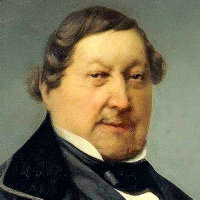 |
Gioacchino Rossini, 1792–1868. Italian composer.
Rossini's fame rests on his 39 operas, especially the comedies, all written while he was still in his thirties. In 1829, fter writing Guillaume Tell, one of the foundation stones of French grand opéra, he essentially retired, settling in Paris, and writing only occasional pieces plus his masterpieces of sacred music, the Stabat Mater of 1842 and Petite Messe solennelle of 1864.
|
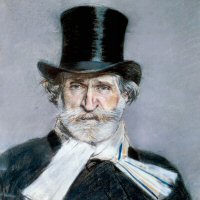 |
Giuseppe Verdi, 1813–1901. Italian opera composer.
Verdi's two dozen or more operas (depending on how you count them) make him the leading Italian opera composer of his time and among the two or three greatest opera composers ever. After what he called his "years in the galleys," he hit his stride in the early 1850s with the trio of Rigoletto, Il Trovatore, and La Traviata. He intended Aïda (1870) to be his last work, but was persuaded out of retirement to write his final Shakespearean masterpieces: Otello (1886) and Falstaff (1893).
|
 |
Arrigo Boïto, 1842–1918. Italian librettist and composer.
Boïto composed a number of operas, of which Mefistofele (1867) is the most often performed. But his fame rests mainly on his masterly libretti for Verdi (Othello and Falstaff) and several other composers.
|
 |
Leoš Janácek, 1854–1928. Czech composer.
Janácek turned to opera fairly late in his career, but his half-dozen mature works in the medium place him in the forefront of opera composers of the 20th century, not only for their distinctive musical style but also their unusual structure and dramatic innovation. Among them are: Jenufa (1903), Káta Kabanová (1921), The Cunning Little Vixen (1923), The Makropoulos Affair (1925), and From the House of the Dead (1928).
|
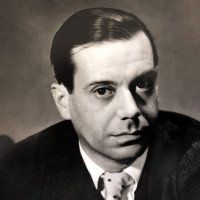 |
Cole Porter, 1891–1964. American songwriter.
Unlike many Broadway composers, Porter wrote not only the music but the lyrics for his songs, and these are notable for their wit, clever rhyming, and encyclopedic range of reference. In addition to numerous standalone songs that became standards, he also wrote musicals such as Anything Goes (1934), Kiss Me, Kate (1948), and Can-Can (1953).
|
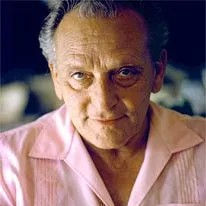 |
Frederick Loewe, 1901–88. German-American composer.
Frederick (Fritz) Loewe was born in Berlin, the son of a Jewish operetta star. He was a piano prodigy, the youngest soloist to appear with the Berlin Philharmonic. In 1924 his father got an offer to appear in New York, and Fritz traveled with him, hoping to write for Broadway—an ambition that was not fulfilled until he teamed with lyricist Alan Jay Lerner and wrote the musicals Brigadoon (1947), My Fair Lady (1956), and Camelot (1960) among others.
|
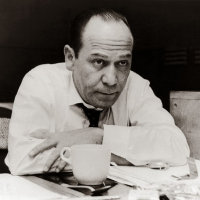 |
Frank Loesser, 1910–69. American writer and composer.
Loesser wrote over 700 songs in his 40-year career, together with the musicals Guys and Dolls, How to Succeed in Business Without Really Trying, The Most Happy Fella, and the film Hans Christian Anderson.
|
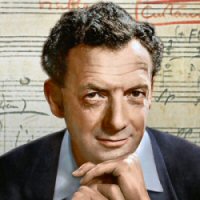 |
Benjamin Britten, 1913–76. English composer.
Arguably the leading opera composer of the mid-20th century, Britten's major operas have included Peter Grimes (1945), Billy Budd (1951), Gloriana (1953), A Midsummer Night's Dream (1960), and Death in Venice (1973), plus many stage works for smaller forces. He was equally active as a composer of instrumental music and text settings, and latterly as a conductor and accompanist.
|
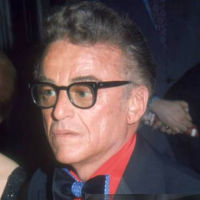 |
Alan Jay Lerner, 1918–86. American lyricist.
Lerner was born in New York City, the son of a clothing retailer; he studied for a while at Juilliard and graduated from Harvard. With composer Frank Loesser, he wrote the lyrics for Brigadoon (1947), My Fair Lady (1956), and Camelot (1960) among several others.
|
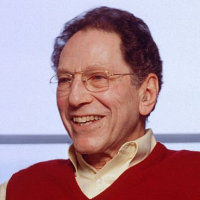 |
Tom Lehrer, 1928–2025. American songwriter and mathematician.
Lehrer graduated in mathematics from Harvard in 1946, and later taught there and other prestigious schools. All this time, however, he was writing and performing songs, generally on contemporary or satirical subjects. For a while in the 1950s and 1960s, this activity blossomed into his main career, as he recorded and performed albums of his compositions that became best-sellers.
|





































